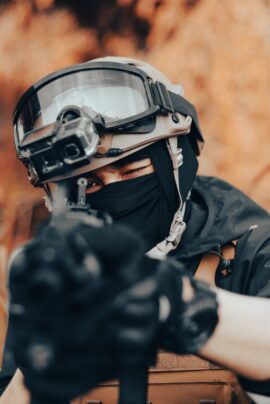
7 Tips to Get the Most Out of Your Tactical Wear
The expectation of greater durability also comes the expectation of greater longevity. Tactical clothes aren’t cheap, and you want to get the most for your money. If you’re shopping for a uniform for the police or armed forces, your choices may be made simpler by your employer’s requirements. For everyone else, there’s no shortage of options, and knowing where to start can be daunting. Hopefully, this will give you a starting point.
What Tactical Wear to Look for
No matter how well you’ve anticipated your needs, don’t underestimate the importance of storage. It may sound obvious, but whether you’re hunting or at the range, you’ll want your phone, wallet, and keys close at hand. Remember that while you’ve made considerations for increased mobility, your personal items will likely need alternate locations in whatever you buy. The pockets that were ideal while you were standing may not serve you well if you find yourself shooting prone. In short, tactical gear will help you through every scenario if you prepare for every scenario.
The Inevitability of Water
Be ready to sweat. Water restricts your range of motion and weighs you down—mitigate it as much as you can. Water-resistance anti-microbial fabrics are likely already on your list of must-haves, but don’t forget to look for moisture-wicking whenever possible. Moisture resistance prevents water from entering a garment, but more importantly, it directs water and sweat to the surface and out of your way. Wicking might not be at the top of your list, but make sure it’s not at the bottom either.
Know the Level of Protection You Need
Bullet-resistant options add weight and restrict breathability, so be prepared to compromise a little bit of your mobility. Each garment should advertise a NIJ Protection level, with Level I being the lightest and Level IV offering the most protection. If you plan to be around 9 mm rounds, LeveI I may be enough, but being over-prepared isn’t a bad idea.
For stab-resistant options, it’s best to keep in mind that Level I is made for garments that are meant to be concealed underneath your clothes. For more substantial armor, concealability may be an afterthought. So, plan your priorities carefully.
Check out the Justice Technology Information Center’s short pamphlet on NIJ protection levels here.
A Note on Body Armor
Unless you’re wearing armor as a requisite of your employer, always check to make sure you don’t have to have an uncomfortable conversation with law enforcement. Prior felony convictions notwithstanding, body armor is legal to buy in most states. City charters and state laws may limit body armor during public events like rallies, concerts, or parades.
Buy Clothes You’ll Actually Use
As cool as a lot of uniform-centric brands may look, ask yourself if it’s something you’ll put to good use. A hoodie may not be the first thing you think of when you think of tactical gear, but there are some great options out there, and they’ll blend in when you’re out and about in public. If you’re looking for something that’s bullet resistant, the upper-weight range for a bullet resistant hoodie is 9 lb. Some brands boast even less weight—not bad!
Also, don’t overlook cargo pants. They sometimes get a bad rap as an oversized look from times gone by, but before they made their way into bargain bins, they were (and still are) premier tactical gear. They’re made for comfort and storage. Just be sure to go with a brand that’s going to give you the durability you need. Most tactical cargo pants have features like reinforced knees and belt loops, as well as fray- and rip-resistant fabrics. There are more features available as well, like knife loops or built-in tourniquets to consider, but you’ll find the price jumps up considerably when you start looking for all the bells and whistles, as does the weight.
Durable, Not Invincible
Colors always fade with time, but not all fabrics fade at the same rate. Many garments have a colorfastness rating, meaning that (you guessed it), they’re more resistant to fading. But whether a product makes outstanding claims or not about its colorfastness, remember that heat takes its toll on all fabrics. Wash in cold water whenever you can, and avoid the dryer when possible. If you must subject your gear to a hot spin cycle, turn it inside out to keep it looking as new as you can for as long as you can.
Concealed Carry Considerations
There’s a lot of clothing out there with unique approaches to concealed carry, but few of them are practical for the average person. A good shoulder holster typically allows a marks-person to sit, stand, bend, and stretch as much as they need. Utilizing pockets and holsters elsewhere is usually for a very specific use, so unless you have an unusual circumstance, staying with the tried-and-true is the most advisable. Wherever you plan to keep your weapon on your person, practice drawing it and make sure it’s comfortable and practical enough to be a daily driver—and remember always keep your finger off the trigger and never point your firearms at anything you do not wish to destroy.
If for some reason you do find yourself in need of a unique concealed carry feature, clothiers aren’t short on options. That includes everything from purses to bras to designer jeans.
At the risk of stating the obvious, clothes are highly personal. Just make sure your tactical gear is moving you forward rather than holding you back. Instead of shopping by price or style alone, make sure it meets your needs. The only dust it should ever gather should be from working out in the field or on a hunting trip—not because it’s too uncomfortable, too hot or too impractical.
Written by: Lanna Perkins, Education Writer

